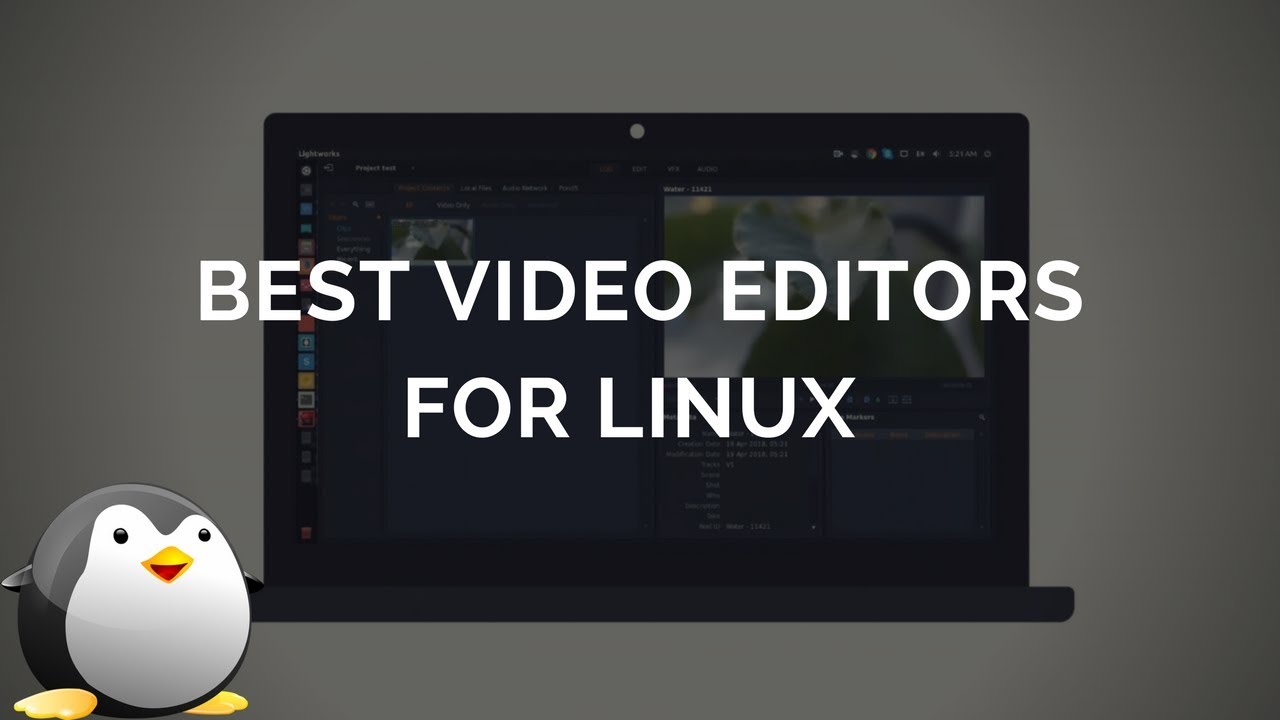
Many of those who have moved to or intend to move to Linux wonder what are the video editors they can use in the new operating system.
1. Avidemux.
Avidemux – is one of the simplest video editors.
Allows clipping, joining, filtering, and encoding video clips. It is compatible with most video formats (AVI, MPEG, MP4, DVD, ASF) and can be easily used by inexperienced users.
Provides many filters that allow you to apply special effects with customizable parameters (resizing, color correction, and more).
It does not have timeline, cutting simply, just by choosing the area to be removed. Converting between different video formats is also very simple: import the file we want to convert and choose the desired format. This is useful for compressing large files that want to be played on different devices.
2. Openshot.
Openshot – is another easy-to-use editor. It offers users a simple way to access their features (timeline editing) as well as many transition effects.
One of its main features is how to import the files you are working with: pull the desired file in time-line then simply drag the slider to cut out parts of the movie.
3. Flowblade.
Flowblade – may seem like a mix of Openshot and other older video editors. In fact, it’s totally different. Default workflow is based on compartments.
It has a collection of impressive filters and effects, even with Picture in Picture. Audio effects are impressive too (many of which are also found in Audacity). Overall, it’s an excellent video editor.
4. Kdenlive.
Kdenlive – its features resemble those of Flowblade, the interface and the way of working is a bit different; once you get used to it, you will be happy with what you can offer. Includes the ability to create new profiles and the ability to stop motion.
Kdenlive is a mature project, ideal for intermediary users in video editing. However, professionals will need some more robust.
5. Blender.
Blender – Some of you may be surprised to see Blender as a video editor recommendation, but it’s really a solid video editor that also has the ability to create 3D graphics. It can also correct details and perform general video conversions. Provides the ability to create zoom effects, add watermarks, and manage layer adjustment. As with 3D imaging, Blender for video editing requires practice and some tutorials to be mastered. Some of its advanced features are determined by taking over basic functions and improving them through more powerful control.
For those looking to make advanced video editing, Blender is a powerful contender. It requires pre-use study and tutorials, the learning curve being steep.
6. Lightworks.
Lightworks – This editor was used in Hollywood to edit many movies.
The presets provided by Lightworks are top of the line. Also consider multicam editing and Lightworks becomes the natural video editor for Linux professionals.
Lightworks also provides support for video editing hardware that can be found in real-life editing studios such as specialized consoles and hardware such as Blackmagic, AJA, and Matrox. Do you need effects? There are presets to keep you busy.
Lightworks is powerful, but its interface is not easy to use. It is recommended to use the free version, only after accommodation can be considered a subscription to the PRO version.
7. Cinelerra
Cinelerra – is another tool for editing video on Linux, used by some famous movie houses. Cinelerra can make audio and video editing with great accuracy, capture, composition. It is a complex tool with many functions, used by professionals.

